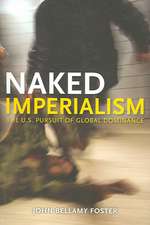The Culture Factory: Creativity and the Production of Culture
Autor Walter Santagata Traducere de Susan Finnelen Limba Engleză Paperback – 15 oct 2014
| Toate formatele și edițiile | Preț | Express |
|---|---|---|
| Paperback (1) | 632.05 lei 6-8 săpt. | |
| Springer Berlin, Heidelberg – 15 oct 2014 | 632.05 lei 6-8 săpt. | |
| Hardback (1) | 638.24 lei 6-8 săpt. | |
| Springer Berlin, Heidelberg – 18 sep 2010 | 638.24 lei 6-8 săpt. |
Preț: 632.05 lei
Preț vechi: 743.59 lei
-15% Nou
Puncte Express: 948
Preț estimativ în valută:
120.94€ • 126.28$ • 99.87£
120.94€ • 126.28$ • 99.87£
Carte tipărită la comandă
Livrare economică 15-29 aprilie
Preluare comenzi: 021 569.72.76
Specificații
ISBN-13: 9783642427824
ISBN-10: 3642427820
Pagini: 124
Ilustrații: XIV, 110 p.
Dimensiuni: 155 x 235 x 7 mm
Greutate: 0.19 kg
Ediția:2010
Editura: Springer Berlin, Heidelberg
Colecția Springer
Locul publicării:Berlin, Heidelberg, Germany
ISBN-10: 3642427820
Pagini: 124
Ilustrații: XIV, 110 p.
Dimensiuni: 155 x 235 x 7 mm
Greutate: 0.19 kg
Ediția:2010
Editura: Springer Berlin, Heidelberg
Colecția Springer
Locul publicării:Berlin, Heidelberg, Germany
Public țintă
ResearchCuprins
Introduction: Questions that Came from Afar.- Introduction: Questions that Came from Afar.- A Model of Production of Culture.- Producing Culture, Conserving Culture.- The Supply Chain of Cultural Production.- Creativity as a Resource, Emotions as a Prerequisite.- Two Models of Creativity: Technological Innovation and Social Quality.- Policies that Stimulate the Production of Culture and Make It Possible to Take the Lead in Strategic Sectors.- The Effects of Creativity on International Markets: The French Genius for Fashion.- Potential Cultural Districts and the Production of Material Culture.- Intellectual Property Rights Take Command.- The Cultural and Creative Industries.- The Market in Contemporary Art.- Producing Culture by Means of Museums.- Conclusions: A White Paper on Creativity and the Production of Culture.
Textul de pe ultima copertă
“Where are your factories that produce culture? Where are your painters, your composers, your architects, your writers, your filmmakers?” The book opens with Leonardo da Vinci and Qin Shi Huang asking embarrassed contemporary policy makers these questions. The first part of the book is therefore devoted to elaborating a model for producing culture. The model takes into account both the role played by creativity in the production of culture in a technologically advanced knowledge society.The second part of the book examines a selection of strategic sectors: fashion, material culture districts, gastronomy, creative industries, entertainment, contemporary art, museums. Special attention is paid to the role collective intellectual property rights play in increasing the quality of culture-based goods and services. In the conclusion policy makers in both developed and developing countries are urged to adopt policies that can foster creativity and promote culture.
Caracteristici
This book outlines the main policies for producing culture today This book contains practical suggestions and recommandations for producing a creative culture This book illustrates how culture and creativity can generate income and create new jobs








